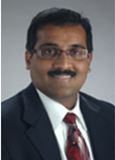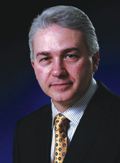More Progress in Atrial Fibrillation Education and Management
Dhanunjaya Lakkireddy MD, FACC, FHRS, Andrea Natale MD, FACC, FECS, FHRS
The editorial team at Jafib wishes you a very prosperous and happy new year. Hope 2014 marks the beginning of several innovations that will change the future of Atrial Fibrillation (AF) management. We thank all the people who contributed to the success of the journal – the authors, reviewers, editorial board members, expert panelists and the Jafib team for an outstanding 2013. We wish to have your continued patronage for the years come. This issue’s cover page signifies the value of healthy life style for our patients and providers alike. Please encourage your patients to stay active and address their AF risk factors aggressively.
Several of us in North America and Europe are going through a severe cold winter. And hopefully the spring arrives soon enough. This year’s Boston AF Symposium was a certain relief from the extreme cold weather. Congratulations are due to Jeremy Ruskin and Colleagues for yet another fantastic annual meeting. The uncertainty of traveling to Boston during peak winter is not there anymore. The quality of the program was superb with several thought leaders in the field sharing their data and experience on the frontier aspects of the AF science. While some advances were made on the basic sciences area, there seems to be a methodical approach to the perfection of science of ablation. While everyone agreed on the role of pulmonary vein isolation in paroxysmal AF, the debate continued on whether adjunctive strategies like linear lesions, complex fractionated electrogram ablation, left atrial appendage isolation/ligation, ganglion plexi ablation are important in non-paroxysmal AF. Newer data on improving the durability and reliability of ablation was presented. The increasing value of contact force and multielectrode ablation was highlighted in various presentations. Left atrial remodeling and the implications of scar seems to be the center of discussion.
This issue of the journal has some exciting original articles, featured reviews and case reports. The breadth of the topics range from oral anticoagulation to a comprehensive review of various LAA exclusion technologies. Some very interesting case reports on the complications of minimally invasive surgical AF ablation, endoscopic retrograde cholangiopancreatography (ERCP), persistent left superior vena cava isolation are featured. Intriguing data on the safety of cardioversion in acute onset AF without systemic anticoagulation, role of left atrial substrate in the management of AF, comparative data on the efficacy and safety of various antiarrhythmic drugs, use of oral anticoagulation in heart failure patients bring in some important insights into day to day clinical practice.
With that we invite you to two very important meetings. The Texas Cardiac Arrhythmia Institute is conducting a 2 day EP Live focused workshop in Austin on February 27th and 28th. This will feature live cases with discussions with experts from all around the world. A very unique learning opportunity for all at every stage of EP their career. In the middle of March during the spring break we present you the 2nd International Symposium on Left Atrial Appendage (ISLAA 2014) in Orlando from March 14 through the 16th. This is a very comprehensive two and half day symposium with a wide range of topics related to stroke, atrial fibrillation and left atrial appendage. Several important presentations will cover the emerging technologies in LAA exclusion and in depth discussions about the role of novel oral anti-coagulants.
Good bye until the next issue
Best Wishes

Dhanunjaya Lakkireddy MD, FACC, FHRS Associate Editor JAFIB

Andrea Natale MD, FACC, FHRS, FESC Editor-in-Chief JAFIB